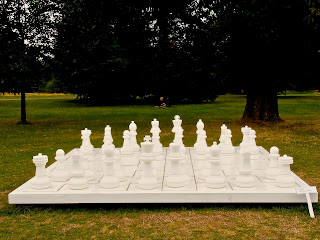I have long been fascinated by Linda's three dimensional woven constructions and her ability to "draw"with myriad slender threads that weave around themselves into delicate grids. Now she is surprising us with a new body of work in which she explores the potential of phragmites, a reed native to the waters of the Neil Garden at Duddingston Loch, where she has been resident for the past few months. Over a season she has immersed herself in nature and in particular the properties of the reed, drying, splitting and weaving them to discover their potential. It has led her to experimenting with weaves recorded by Theo Moorman in her quest to transform plant material into woven cloth. Most exciting are her prints of the reeds as viewed through a microscope, which, in turn, have resulted in a series of sensitive drawings. Her investigation has culminated in an exhibition at the Edinburgh Botanical Gardens this summer aptly entitled From Straw to Gold.
Linda is a keen gardener herself, and her upstairs studio overlooks the results of her labours, a profusion of colour and leaf that spills out of ordered beds that have been carefully tended over the years. We were fortunate to enjoy her warm hospitality and share a little of the magic she creates in her thoughtful practice.
Linda in her studio with drawings
On Friday afternoon we visited the WASPS studios which are housed in an old bakery building converted into a gallery and artists' studios that have subsidised rent, allowing the residents a relatively inexpensive area in which to produce their work. I had not met Jo Barker before although I have followed her work for some time.
Also a graduate from the Edinburgh College of Art, her distinctive imagery combines a tracery of swirled lines and dots that oscillate over dense ovals and circles which combine to form colour saturated tapestries. To arrive at these unique designs she uses techniques of drawing, painting, collage and digital manipulation. She showed us many small sketchbooks which contained repeated explorations of colour and form. Because the visual impact of the work relies heavily on the translation of colour, her yarns have to be chosen in a very particular manner for their density and light absorption qualities.
Jo also spoke of an inspirational recent trip to Egypt where she was able to view the Wissa Wassef studios and experience the light and colour of another, very different country.
Jo in her studio
Upstairs we were welcomed into Fiona Hutchison's studio, which is draped with her exploratory ventures into capturing the essence of moving water. She is a sailor and is inspired primarily by the sea, swathes of blue "stuff" abounds and she herself, dressed in blue, animatedly communicates this passion.
She explores the surface of the sea and its light reflecting qualities through the use of textured materials such as sisal and tracing paper which has been painted, coiled and threaded. A prolific exhibitor and inspired teacher she is generous in talking about the methods of her process and held us spellbound with her explanation of how she experiments to create her three dimensional pieces.
Fiona talks about her work
Although we were unable to meet her we were also able to view Sara Brennan’s work at WASPS. Her tapestries appear as muted horizons - like paint dragged in one colour over the surface of another. Woven in monochromatic scale, her marks explore subtle nuances made deliberate by the carefully constructed weaving.
Our last visit was to Joanne Soroka who has recently published an excellent book on tapestry entitled Tapestry Weaving - design and technique. She had displayed a couple of large tapestries for us to view in which she explores her mixed ancestry through motifs as diverse as scratched rock and rusted metal. She also showed us a new series of small experimental works that employ texture and gilt coloured yarn.
Joanne Soroka









































